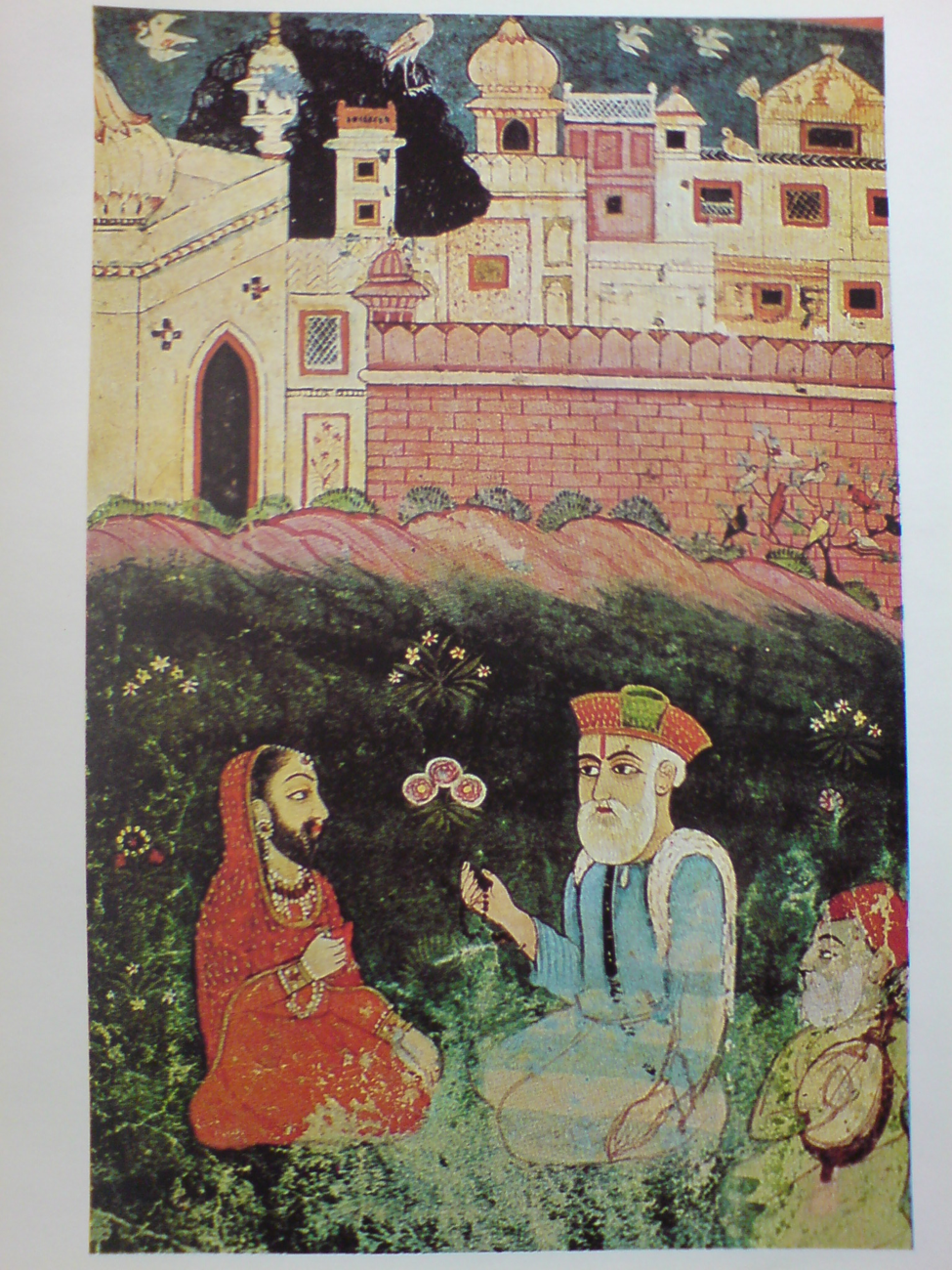Unlike Hinduism, which is replete with stories of queer encounters and gender-fluidity, the Sikh attitude towards queer individuals can only be surmised through interpretations of teachings and events in the lives of the Gurus. This paucity of references to queer lives is despite the existence of the vibrant hijra community in the medieval period under the state patronage of the Moghuls.
However, there is one story that refers to a meeting between Guru Nanak and a Sufi saint dressed as a woman. It is narrated in a Janamsakhi, which are a collection of life stories of Guru Nanak written long after his death. They play an important role in Sikh history and theology, as it is through these stories that the life, works, and teachings of the Guru is transmitted. The Janamsakhis are not to be regarded as primarily historical documents, however; they include social and cultural myths that emerged over the years and contain descriptions of miracles that occurred during the lifetime of the Guru.
One such janamsakhi, the B40 Janamsakhi, contains various illustrations and stories from Guru Nanak’s life, especially one pertaining to a meeting with Sheikh Saraf, a Sufi saint:
During Guru Nanak’s visit to Baghdad, he met Sheikh Saraf who was ‘wearing the 16 adornments [that a woman traditionally applied to herself in order to attract her lover]. [He was clad in] female garments and arrayed in all manner of jewellery. To his eyes he had applied black eye-shadow (anjan) and his hands he had stained red with henna. He sang ghazals in the bazaar and drew enormous crowds’.
The Guru asked the Sheikh why he was dressed in this manner, to which the sufi saint replied that since he had not yet found his beloved, he decided to dress as a bride. The Guru observed that the most beloved one is God, for whom external adornments and attire matters not at all:
‘If [a man] commits the sins of innumerable existences and then, if the Master so wills, meets one who has attained Truth then he is saved. It is [dependant on] the favour of the Master. Whatever He desires, that He performs’.[4]
And so, the Guru and the Sheikh continued their discourse on the nature of the divine. It is said that they even recited hymns or ghazals for each other. This lore, while unlikely to be of a historical nature, hints at the comfort and acceptance Guru Nanak exhibits during his encounter with a cross-dressing sufi.
An excerpt from the book I am Divine So Are You: How Buddhism, Jainism, Sikhism and Hinduism Affirm the Dignity of Queer Identities and Sexualities , published with the permission of HarperCollins India
- Submissions Open for Rainbow Awards for Literature & Journalism 2025 - June 6, 2025
- Daniel Craig’s “Queer” and Elliot Page’s “Close To You” to bookend Mumbai’s iconic LGBTQ+ film festival KASHISH 2025 - May 25, 2025
- Film Kuch Sapney Apne Celebrates Diversity and Family Acceptance, and Stars Parents and LGBTQ+ Members in Cast - February 25, 2025


